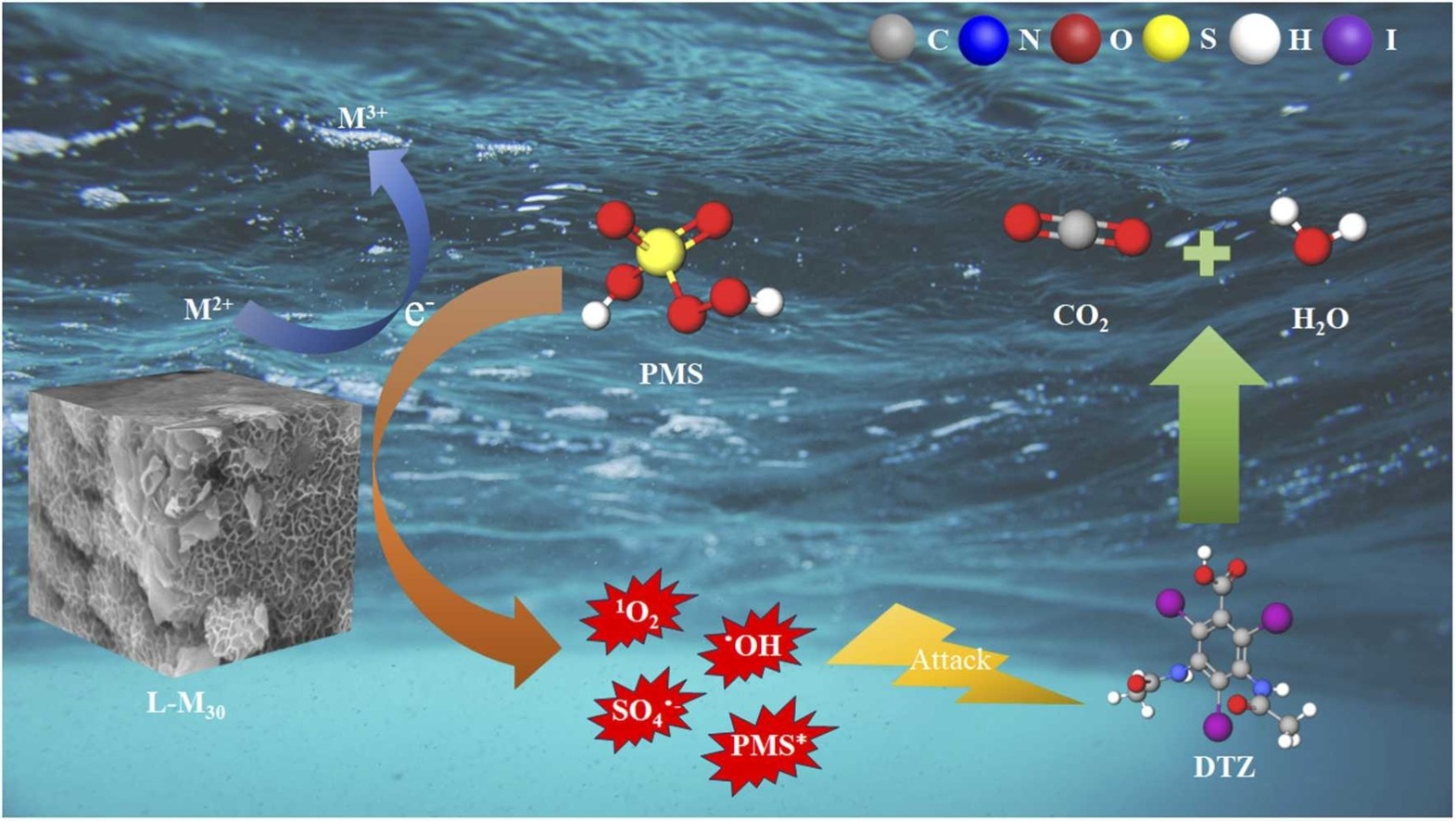Improved catalytic degradation of diatrizoic acid via persulfate activation by layered double hydroxide on multi-layer MXene substrate
, , , , , , , , ,
Abstract
The use of transition metal-activated peroxymonosulfate (PMS) technology has gained significant traction in the remediation of persistent waterborne pollutants. Challenges such as metal precipitation, stability concerns, and the slow transition between various metal oxidation states have hindered improvements in degradation efficiency. To address these concerns, composite materials were synthesized, incorporating CoFeNi layered double hydroxide (LDH) and MXene as activators for PMS. This innovative approach aims to efficiently eliminate persistent organic contaminants through a synergistic interplay of both free radicals (SO4-•, HO•, O2•-) and non-free radicals (1O2). Under optimized conditions (pH 5, 30 mg/L catalyst, 0.48 mM PMS), the L-M30/PMS system achieved 100 % degradation of Diatrizoic acid (DTZ) within 10 min. Subsequent iterative experiments, along with detailed Density Functional Theory (DFT) and X-ray Photoelectron Spectroscopy (XPS) analyses confirm that the incorporation of MXene significantly amplifies the activation potential of LDH on PMS. These findings highlight that the synthesized LDH and MXene composite is a highly effective catalyst for persulfate, holding significant promise for the efficient removal of DTZ.

1-s2.0-S2213343725022857-main.pdf
转载本文请联系原作者获取授权,同时请注明本文来自张树鹏科学网博客。
链接地址:https://wap.sciencenet.cn/blog-311896-1491841.html?mobile=1
收藏

